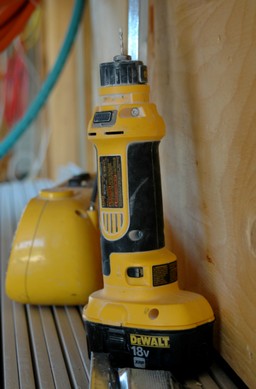 When it comes to successful renovations, there are a few tools designed to be especially useful for getting you out of tight jams. One of the best is also one of the least known. Generically called a ‘rotary saw’, it’s just the thing for making cuts (both straight and curved) in locations that are too tight for any other power tool to fit into. If you’re planning some DIY renovations for the coming year, you’d be wise to prepare yourself for the tight-space challenge.
When it comes to successful renovations, there are a few tools designed to be especially useful for getting you out of tight jams. One of the best is also one of the least known. Generically called a ‘rotary saw’, it’s just the thing for making cuts (both straight and curved) in locations that are too tight for any other power tool to fit into. If you’re planning some DIY renovations for the coming year, you’d be wise to prepare yourself for the tight-space challenge.
Renovations always involve a lot of unknowns. You can never fully anticipate what you’ll find when you tear down a wall to make a new doorway or climb into an attic to install a new exhaust fan. But the need to complete cuts in tight quarters is almost guaranteed. It’s only a matter of time.
Rotary Saw Power Tools Operate on the Same Principle…
- A small, lightweight, hand-held electric motor spins a cutting bit that looks something like a drill or round rasp.
- You plunge the spinning bit into your work surface, then push it around with your hand to complete the cut.
- The sides of the bit do the work. Curves and straight lines are no problem. The bit cuts wherever you push it, turning on a dime.
- Since the tool spins so quickly (about 15 times faster than the rotation of your car engine at highway speeds), it easily chews through paneling, plywood, drywall and even ceramic wall tiles. You’ll need different bits to handle these materials, but they all yield to the power of a rotary saw. Just be sure to wear safety glasses and hearing protection while you work.
The best rotary saws also include accessory attachments for vacuum dust collection. It’s definitely worth the investment if you’re working around the living quarters of your home.
Power Tool Comparison: Rotary Saws Versus Jigsaws
The first time I switched on a rotary saw, I hoped it might replace my jigsaw. A few minutes of cutting, and I knew it wouldn’t.
- Although every rotary tool is designed to make curved cuts, it can’t do them as smoothly as a jigsaw. That’s because the round, spinning bit has no ability to guide itself forward during a straight-line, freehand cut. A little movement to one side or the other during use, and you’ve got a wobble or a blip or a divet in the cut line.
- By contrast, the 1/4-inch width of a jigsaw blade makes it more-or-less self-guiding, producing smoother cuts in the process, though all jigsaws do need quite a bit of space to operate.
- Compare this to the tall, slim profile of a rotary saw that only needs a couple of inches of clearance on each side to do its work. And besides, a slightly uneven cut isn’t a problem at all in most rough-in, renovation situations.
Rotary Saws are Great for Cutting Drywall
Over the last ten years, rotary saws have become a favourite tool of professional drywall installers because they allow cutouts for electrical boxes to be made more quickly and easily than with any other method. You can take advantage of the tool in this way, too. All it takes is a special kind of cutting bit.
- Lay a sheet of uncut drywall against an electrical box mounted on the wall framing, plunge the spinning tool bit through the drywall, then follow the perimeter of the box with the rotary saw.
- Cutting bits used for drywall are smooth on the end, allowing them to follow the outline of the box without damaging it.
- Cutouts in soft, ceramic wall tiles can be done in a similar way.
- Floor tiles are generally too hard for a rotary saw to handle, so don’t try to cut them.
A rotary saw isn’t the first power tool you should buy to help with home renovations, but it shouldn’t be the last, either. It’s one of those tool investments you need to make without knowing exactly how it will pay off. But once a rotary saw has pulled you through a few tight renovation challenges, you’ll wonder how you ever got along before.



